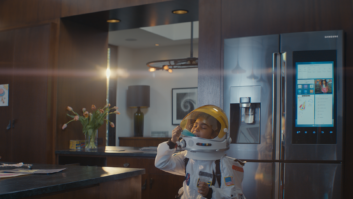According to the current HDTV timetable, December 2006 will be end of the transition to digital television. Whether you believe in HD fairies or not, displays have definitely changed. For CI installers, these pricey displays have been a driving force in our sales. For the past few years we have been selling lots of $3,999 plasmas instead of $899 Trinitron tubes. We have had some good years selling these new high-priced displays.
Every TV retailers ads now include lots of HDTV models: projectors, plasmas, DLPs, LCDs, and even HD CRTs. The good news for consumers is that these prices are dropping quickly. The bad news for installers is that these prices are dropping quickly. Over the next few years, prices and our profits for these displays will continue to drop until CI margins are thinner than those at the big box stores.
This will really put the squeeze on our profits for the most expensive items that we sell. Most CI dealers have to source video through distributors, who must also find margins with which to profit.
In the cycles of consumer electronics technology we have been trained to expect the delivery of a new higher level of technology every few years that will reload all of the prices to the top of the scale.
The current upgrade to HDTV hoisted TV prices to the top of the scale. From now on, the pricing here will continue to bottom out, with no new display technology on the distant horizon to replace it. We cannot survive in this market with plummeting prices. Without significant tech breakthroughs by manufacturers, the future of our businesses is threatened.
What about audio? Can we look there for future profits? More bad news. The problem now is that the buyers full attention has been drawn to the HDTV. For the past five years, consumer interest in quality stereo sound has been quickly eroding. Today, the iPod is the focus of the music world. Giant speaker companies like Harman Kardon have learned that in todays market they make most of their profits selling iPod speakers and accessories. Traditional mid-range and high-end speaker sales have fallen at an alarming rate. Other manufacturers are also having difficulty selling traditional speaker products in the U.S.
One survey mentioned that when a consumer buys a TV these days, he spends only 20 percent of his budget on the sound. Talks I have had with stereo boutiques confirm fears that respect for a quality listening experience may be slowly dying with the gray-haired baby boomers.
The malls today are filled with the new generationbrought up on Playstation and Napster. They dont buy CDs anymore and play them on a component stereo system. They spend their time downloading their tunes onto their laptops and listen to them with crappy little earbuds.
To make things even worse, the thin profile of plasma displays has changed our perception of what speakers should look like. Today, speakers need to be flat, metallic, and as thin as the plasmas. The problem is the cool look is now everything and the sound quality is virtually meaningless.
This past Christmas I scouted the aisles of my local Sears store to see what the average consumer expects to find in the electronics department. I saw plenty of TVs, DVDs, iPods, and personal-size boom boxes. I did not, however, see a single floor-standing or bookshelf speaker.
The bottom line is that consumer electronics are becoming commodities. Even Sony is having trouble dealing with the rapidly dropping prices in this market. We must take this information as an omen as we plan for the future of our custom install companies.
For 2006, the new HD DVDs will give us a new product, but I see nothing significant as I survey the distant horizon.
If profits vanish from selling these products, our businesses will face a huge challenge to survive. Installers who sell exclusively to the rich and famous will probably hold their course, but the middle residential market that is trying to expand will face real challenges. Any plans your business has for the future must take into consideration the falling profits in picture and sound. Consider also that control systems, which are more customized and still profitable, exist primarily as a support for the A/V systems that we have been discussing.
During the short history of custom home installation we have relied on new products that injected new profits into the market. With a look forward into the future of picture and sound, we must recognize that the times they are a changin.
Richard Riehl ([email protected]) is an A/V systems expert and consultant from Los Angeles, California.



